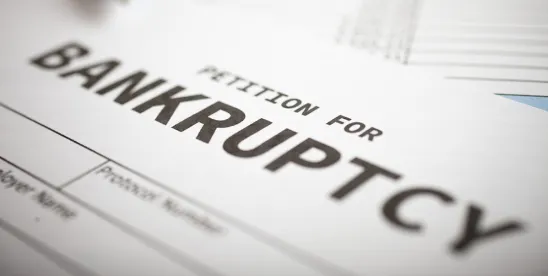As of June 21, 2024, the debt limit for small business bankruptcies, also known as Subchapter V bankruptcies, reverted to $3,024,725 from the temporarily increased limit of $7,500,000 established under the Coronavirus Aid, Relief, and Economic Security Act (CARES Act). This reversion limits small and midsize businesses’ access to a streamlined and cost-effective alternative to traditional Chapter 11 filings, potentially leading to broader financial implications.
Background on Subchapter V
On February 19, 2020, Congress enacted the Small Business Reorganization Act (SBRA) to streamline the Chapter 11 bankruptcy process for small businesses by creating Subchapter V of the Bankruptcy Code.[1] Initially, a “small business” under the SBRA was defined as one with less than $2,725,625 in debt, limiting eligibility for many businesses.
The COVID-19 pandemic prompted an increase in this debt limit to $7,500,000 under the CARES Act, significantly expanding the pool of businesses that could benefit from Subchapter V bankruptcies.[2] Originally set to expire on March 27, 2021, this higher threshold was extended to March 27, 2022, with President Biden’s signing of the COVID-19 Bankruptcy Relief Extension Act of 2021.[3] For a brief period, the debt limit reverted to the original $2,725,625, restricting access to Subchapter V for entities with debt between $2,725,625 and $7,500,000. This situation was rectified on June 21, 2022, when President Biden signed into law the 2022 Bankruptcy Threshold Adjustment and Technical Corrections Act, extending the $7.5 million debt limit to June 20, 2024, and retroactively covering cases filed between March 28, 2022, and June 21, 2022.[4]
Impact on Small Businesses
Subchapter V quickly became a vital tool for distressed small businesses, allowing them to discharge debt while retaining ownership and bypassing certain costly procedural oversight mechanisms inherent in typical Chapter 11 cases. However, the expiration of the higher debt threshold provision now excludes businesses with debt ranging from $3,024,725 to $7,500,000 from utilizing Subchapter V.
Subchapter V bankruptcy cases offer small companies a more cost-effective and expedited alternative to traditional bankruptcies. They eliminate expenses like court-appointed creditors’ committees and quarterly fees to the US Trustee’s Office. Additionally, Subchapter V, among other things, imposes shorter deadlines for filing reorganization plans and provides greater flexibility in negotiating with creditors as well as confirming a plan of reorganization.
The extension that increased the debt limit applicable to Subchapter V bankruptcy cases to $7.5 million expired on June 21, 2024. As a result, for Subchapter V cases commenced on or after June 21, 2024, the applicable debt limit is the original limit enacted in the SBRA, as adjusted per 11 U.S.C. § 104, or $3,024,725.
Legislative Developments
The bipartisan 2024 Bankruptcy Threshold Adjustment and Technical Corrections Act (S. 4150), introduced in the Senate on April 17, 2024, aimed to extend the $7.5 million debt limit for an additional two years.[5] However, the higher debt limit expired on June 21, 2024, causing the law to revert to the previous $3,024,725 limit. Sen. Rand Paul of Kentucky blocked its swift passage in the Senate. Sen. Dick Durbin of Illinois expressed his disappointment, stating, “I am disappointed that one Senator has stood in the way of this bill. I will continue to try to restore the $7.5 million debt limit for small business bankruptcies.”[6]
Durbin emphasized the success of the increased limit, noting, “The increased $7.5 million debt limit for Subchapter V bankruptcies has been a resounding success, allowing more small businesses to efficiently reorganize, preventing closures, and protecting jobs.”[7]
Implications for the Banking Industry
For lenders and the banking industry, the reversion to the lower $3,024,725 debt threshold presents several challenges:
- Increased Risk of Defaults: Many small businesses will find it more challenging and expensive to file for bankruptcy, potentially leading to an increase in defaults.
- Higher Recovery Costs: The costlier and more complex Chapter 11 proceedings may increase the financial burden on creditors attempting to recover debts.
- Financial Stability Concerns: The stability offered by a permanent extension of the increased debt limit, as recommended by the American Bankruptcy Institute (ABI) Task Force, would be optimal. However, the current situation creates uncertainty and potential instability in the small business sector.
According to the ABI, Subchapter V bankruptcy cases accounted for approximately 30% of all Chapter 11 bankruptcy filings in the United States between February 19, 2020, and September 30, 2023.[8] The ABI reported that more than one-quarter of these small business debtors would not have qualified under the lower debt threshold and recommended permanently raising the limit to $7.5 million.[9]
As the expiration of the higher debt limit approached, small business bankruptcies continued to rise. Bankruptcy experts predict that Congress will eventually restore the $7.5 million threshold, given its bipartisan support.[10] However, businesses on the edge of eligibility may face difficulties if legislative action is delayed during an election year, leading to a prolonged reversion to the lower debt limit.
Action Items for Lenders and Banking Industry
Given these developments, it is critical for financial institutions to:
- Reassess Risk Exposure: Review and adjust exposure of small business clients affected by the lower debt threshold.
- Adjust Recovery Strategies: Prepare for potentially higher recovery costs and more prolonged proceedings in the absence of the higher debt limit. Additionally, lenders may see an increase in assignments for the benefit of creditors and receivership proceedings.
- Monitor Legislative Updates: Stay informed on the progress of the 2024 Bankruptcy Threshold Adjustment and Technical Corrections Act and other related legislative actions.
In summary, the expiration of the higher debt threshold under Subchapter V presents significant challenges for small businesses and potential implications for the banking industry. Proactive measures and close monitoring of legislative developments are essential to navigate this period of uncertainty.
[1] The Small Business Reorganization Act (SBRA) of 2019 is codified in the US Bankruptcy Code as Subchapter V of Chapter 11. See 11 U.S.C. §§ 1181–1195.
[2] The CARES Act, Pub. L. No. 116-136, 134 Stat. 281 (2020).
[3] COVID-19 Bankruptcy Relief Extension Act of 2021, Pub. L. No. 117-5, 135 Stat. 249 (2021).
[4] Bankruptcy Threshold Adjustment and Technical Corrections Act, Pub. L. No. 117-151, 136 Stat. 1298 (2022).
[5] Bankruptcy Threshold Adjustment Extension Act, S. 4150, 118th Cong. (2024).
[6] Dietrich Knauth, Small business bankruptcy rules get tighter after US law expiration, Reuters (June 21, 2024), available at https://www.reuters.com/legal/government/small-business-bankruptcy-rules-get-tighter-after-us-law-expiration-2024-06-21/
[7] Id.
[8] Amer. Bankr. Inst., Subchapter V Task Force Final Report (2024), available at https://subvtaskforce.abi.org/.
[9] Id.
[10] Dietrich Knauth, Small business bankruptcy rules get tighter after US law expiration, Reuters (June 21, 2024), available at https://www.reuters.com/legal/government/small-business-bankruptcy-rules-get-tighter-after-us-law-expiration-2024-06-21/.




 />i
/>i
